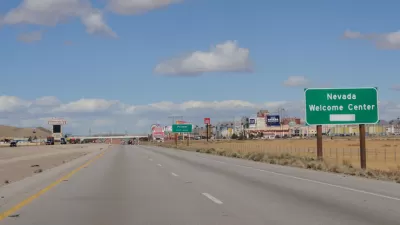The report by the state Department of Housing and Community Development is in the form of a draft assessment that solicits comments. For the last 10 years, the state produced on average 80,000 units annually, while the need was for 180,000 units.

Justin Ewers shares news of a detailed report, "California’s Housing Future: Challenges and Opportunities," which represents "the [Brown] administration’s highest-profile move on housing since last spring, when the governor sought to accelerate housing construction in urban areas by dramatically streamlining the local approval process for multi-family developments." That proposal failed in the California State Legislature in 2016.
In California’s Housing Future, the administration has returned to the fray, offering the first official assessment of the state’s housing goals since 2000—and highlighting the challenges policymakers will have to overcome to make it easier to rent or buy a home in California.
The 2000 report, "Raising the Roof, California Housing Development Projections and Constraints 1997 - 2020," was released not by Brown's predecessor, Gov. Arnold Schwarzenegger, but by his predecessor, Gov. Gray Davis.
The Draft Statewide Housing Assessment by the California Department of Housing and Community Development solicits public comment through March 4, 2017 and will be the basis of public meetings this month held throughout the state from San Diego to Redding, in addition to a January 13 webinar.
Among the report's other findings:
- Lack of supply and rising costs are compounding growing inequality for younger Californians.
- One-third of renters pay more than 50% of income toward rent.
- Homeownership rates are at their lowest in California since the 1940s.
- California [with 12% of the nation’s population] accounts for a disproportionate 22% of the nation's homeless population.
- Continued sprawl will decrease affordability and quality of life while increasing combined housing and transportation costs on families.
"The report includes a range of potential solutions, including streamlining local and state land-use and environmental rules and boosting funding for low-income housing," reports Liam Dillon for the Los Angeles Times. Dillon was also the guest on KPBS (NPR affiliate in San Diego) Midday Edition on Jan. 4 where he discussed the report's findings and recommendations.
Hat tip to MTC Headlines.
FULL STORY: Governor’s Housing Department Releases List of Options for Addressing California’s Housing Crisis

Study: Maui’s Plan to Convert Vacation Rentals to Long-Term Housing Could Cause Nearly $1 Billion Economic Loss
The plan would reduce visitor accommodation by 25,% resulting in 1,900 jobs lost.

North Texas Transit Leaders Tout Benefits of TOD for Growing Region
At a summit focused on transit-oriented development, policymakers discussed how North Texas’ expanded light rail system can serve as a tool for economic growth.

Why Should We Subsidize Public Transportation?
Many public transit agencies face financial stress due to rising costs, declining fare revenue, and declining subsidies. Transit advocates must provide a strong business case for increasing public transit funding.

How Community Science Connects People, Parks, and Biodiversity
Community science engages people of all backgrounds in documenting local biodiversity, strengthening connections to nature, and contributing to global efforts like the City Nature Challenge to build a more inclusive and resilient future.

Alabama: Trump Terminates Settlements for Black Communities Harmed By Raw Sewage
Trump deemed the landmark civil rights agreement “illegal DEI and environmental justice policy.”

Dear Tesla Driver: “It’s not You, It’s Him.”
Amidst a booming bumper sticker industry, one writer offers solace to those asking, “Does this car make me look fascist?”
Urban Design for Planners 1: Software Tools
This six-course series explores essential urban design concepts using open source software and equips planners with the tools they need to participate fully in the urban design process.
Planning for Universal Design
Learn the tools for implementing Universal Design in planning regulations.
City of Santa Clarita
Ascent Environmental
Institute for Housing and Urban Development Studies (IHS)
City of Grandview
Harvard GSD Executive Education
Toledo-Lucas County Plan Commissions
Salt Lake City
NYU Wagner Graduate School of Public Service



























